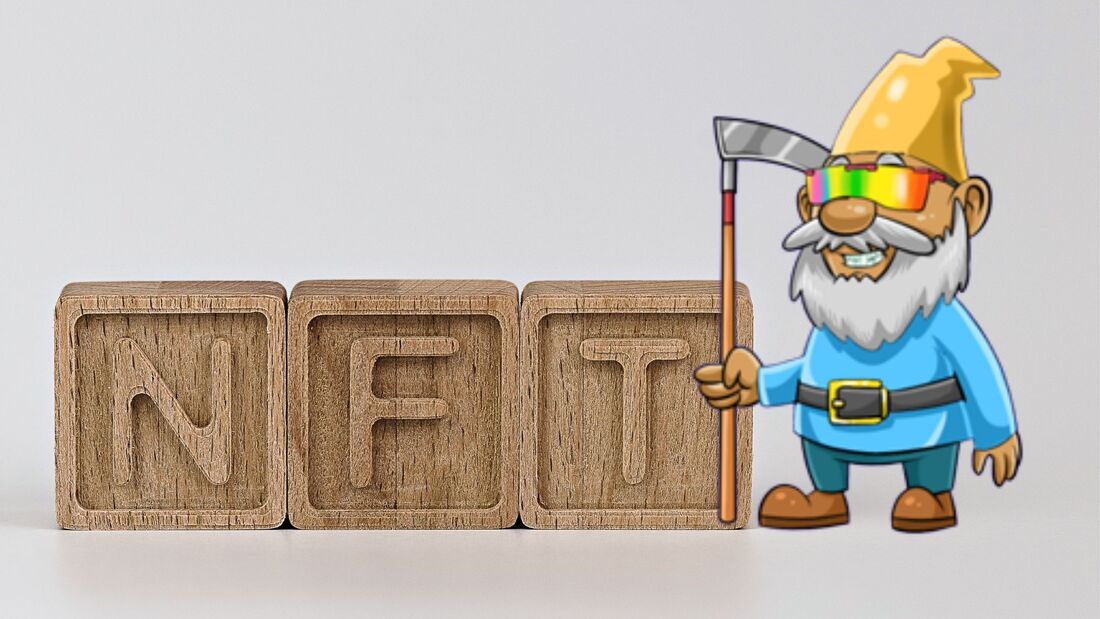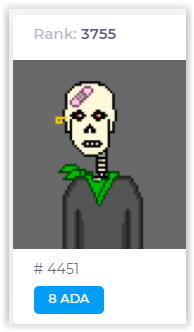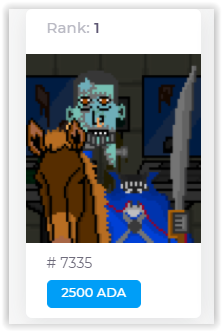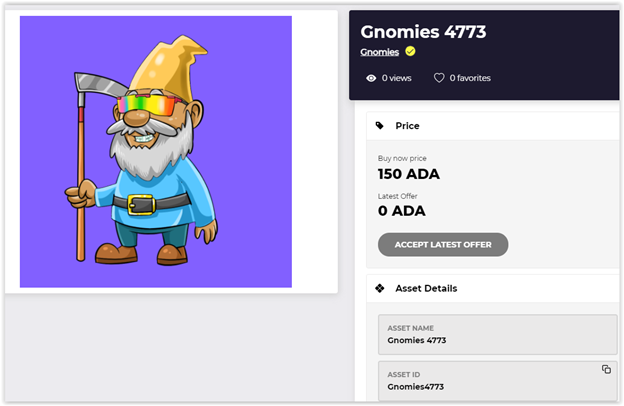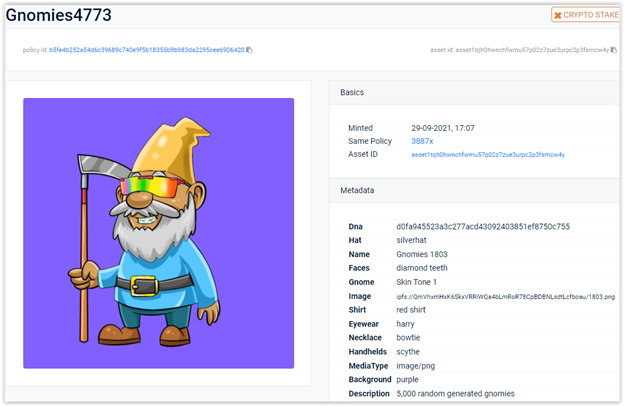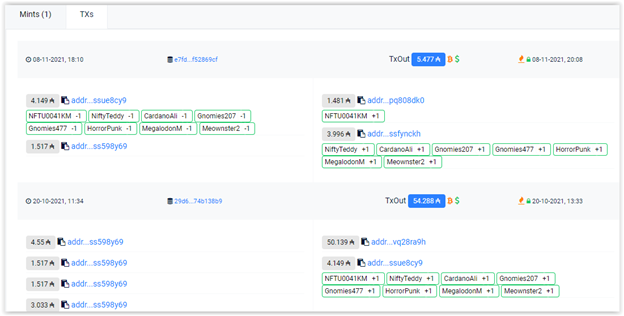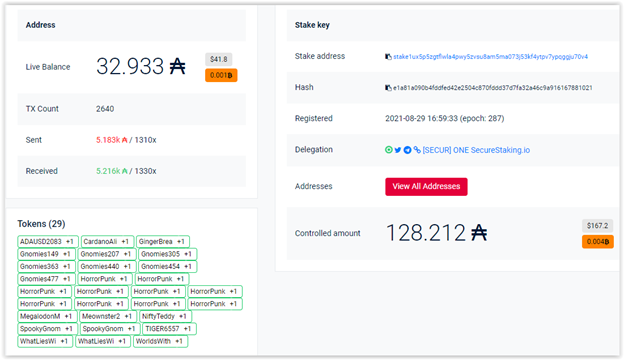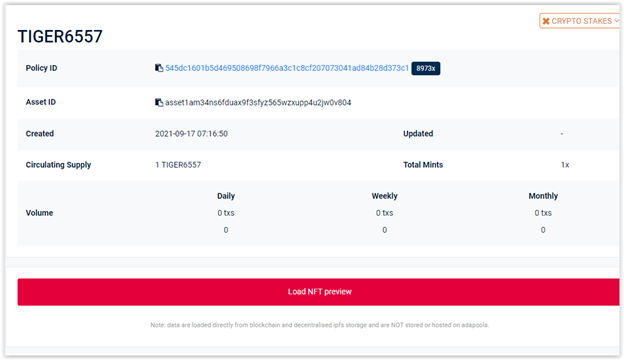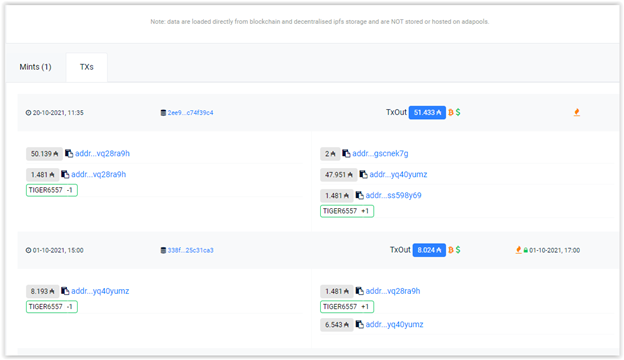|
A friend recently asked me to be the statistician on a new NFT project. And so my adventure began, and this blog post shares my experience to help you assess the wealth of prospects who have NFTs. What are NFTs? Non Fungible Tokens are, essentially, electronic trading cards. You can buy an NFT pet rock; just know that you are buying a digital pet rock graphic. The “Non Fungible” part comes in because your pet rock NFT is secured by the blockchain where it is stored. What’s a blockchain? It’s an online ledger where your deposit address is a long mixture of letters and numbers, and nobody can break into your wallet without your secret key (however, bandits have! That’s a different story.). In other words, owning an NFT is like owning a Bitcoin, but the NFT is a piece of art or a video. Here's a short review:
If you want a much longer explanation, read this issue of “Morning Brew." What is the point to owning one? Like baseball trading cards, some sell for a lot of money. In addition, some are automatically more valuable the moment that they are born (called “minted”). To make sense of that, we’ll discuss rarities next. An NFT collection can be a single work of art drawn or recorded by hand, like this one: https://tokhun.io/explore/8d2c41fed9a8e6317020712b007eb8b5587107879832a2d79070fad8.46757a696f6e436f6e736f6c65 An NFT can also be a computer-generated mixture of characteristics, with varying levels of rarity among them. For instance, the NFTS in our Horror Punks project (see here: https://horrorpunks.io/) were created using 10 kinds of characteristics with as many as 16 categories for one of them. For these kinds of NFTs, the features carry varying degrees of rarity. For instance, we had very few Horror Punks who were headless horsemen. Understanding the rarity of an NFTs is the key to valuing it. For instance, if 50% of the minted NFTs have a white background and 10% have a blue background, then the NFTs with blue backgrounds are rarer and therefore more valuable. That’s why I was brought into the Horror Punks project – to build the rarity charts and help create the feature mix that made some rare and some common. The goal was to make 5% of the entire 10,000 collection very rare (or “fearluminati” as we labeled them). I also built the rarity charts for the project’s website to help buyers determine the relative rarity of their NFTs. But a buyer can’t choose the rarity of the NFT if he mints one. The minting machine chooses a random NFT from the collection at the time of minting. The minting price is set before minting goes live. So a buyer who sends cryptocurrency to mint an NFT (using the same methods as transferring cryptocurrency coin) receives the NFT back to his wallet. As I’ve said above, the buyer does not get to choose the rarity of the NFT at minting time, and that’s the sport of minting them (it’s also why some people buy only on the secondary market). Some people mint many NFTs from the same project hoping to catch that rare one that pays for all of them, like a venture capitalist does. Here’s a snapshot of a Horror Punk (my team’s project) that is categorized as common. His asset number if #4451, which we’ll use later to identify his owner. His rank is listed by cnft.tools (a ranking site) to be 3,755, which is among the lowest ranks of the project since not all 10,000 Horror Punks have been minted. This Horror Punk is offered for sale for 8 ADA, which translates to about $8.30 at the time of this writing. Here is the rarest one: Notice that it’s for sale for 2,500 ADA, or about $3,350. Why the difference? This Horror Punk is on a horse, which is a very rare trait, and he has other very rare traits as well. CNFT.Tools used an algorithm to determine that he is the most rare-featured Horror Punk. However, the buyer who minted him paid the same minting price as did the buyer for the common one above. Our project is sold on the Cardano network, meaning that people buy them using Cardano coin (ADA), which does not charge the extreme transfer fees that the main NFT network, Ethereum (ETH), does. You’ll see when I explain how to value these why you want to know that. As a fundraiser, you may get calls to receive an NFT as a gift, or you may be talking to or researching a prospect that has them. Now that you understand how they’re made and that there is a rarity involved, let’s look at how to value them. First, you can find all the NFTs owned by one person’s wallet. The blockchains for both ADA and ETH NFTs are public. It was designed that way. So, if you knew, for instance, that I owned certain NFTs, you’d have a way to research them. Here is how to research NFTs owned on the Cardano (ADA) network. Identify an NFT owned by the person. You’ll be able to get the wallet address that way. Here is one of mine: Isn’t he adorable? This guy is from the Gnomies project, which did not sell out all of its 10,000 NFTs (a normal sized run). Then the developers got tired of the project and sold it, and now it’s disappeared. So I either have something worth nothing or, in a few years, I’ll have a very valuable Gnomie. I don’t know yet. But now you know that I own Gnomies 4773. That’s a unique asset tag. You can look it up on https://adapools.org/nft, which tracks Cardano NFTs, and search by the asset name. Here’s the snapshot: The first thing you would write on your asset note for this NFT would be, “Prospect owns the NFT, Gnomies 4773, which is one of 5,000 random generated NFTs by the Gnomies project.” Then you would click on the asset link, and click on “TX’s”. The “Mint” tab tells you when and what wallet address minted the NFTs. You will see something like this: “addr…” means wallet address. That is the address of one of the wallets belonging to your prospect. Smart NFT owners use several wallets, so this is only one. So remember that even doing this amount of research leads you to the tip of the iceberg, just like finding some of your prospect’s stock. Here’s what you see when you click the wallet address: Looking pretty geeky, right? Those green boxes that you see on the lower left represent the 29 NFTs that are held by this wallet. How do you value them? You look them up again on cnft.tools. Here’s an example of the Tiger project from this collection: Click the TXs tab to see what I paid for it or if I minted it (I bought it on the secondary market): You’ll see that I paid 51 ADA for the Tiger, when the person who sold it to me paid just over 8 (making me what business professors call, “The Last Fool”). Your second line on your prospect’s asset note would read, “She bought it on October 10, 2021, for 51 ADA, or $67 in current dollars.” Your final note would be to give it a current value by finding the sale prices for other NFTs in the same relative rank on cnft.tools.
Now you know how to value an NFT collection! You also know how to get into a project. Most NFTs are still on the Ethereum network, so go here to check them out: opensea.org. You’ll find most NFTs on Ethereum and its niece, Polygon, on this website: https://opensea.io/assets Look here to see the NFTs that I’m creating on this network: https://opensea.io/collection/shakespearesonnet18 These NFTs are easier to value because their sale price is public. Also Opensea is easier to navigate when it comes to finding out about recent sales. Other cryptocurrencies are looking to add NFTs, so keep an eye out. Throughout my career, I have learned about different ways to hold assets. Actually participating in an NFT project was a wonderful way to get introduced to this kind of asset. I’m not sure which NFTs will shake out as the most valuable – you can’t eat or play with them but that’s also true of a Picasso – but you and I now both know how to find out.
13 Comments
5/28/2022 11:20:04 am
What an exquisite article! Your post is very helpful right now. Thank you for sharing this informative one.
Reply
8/1/2022 09:22:10 am
Was gathering info on NFT marketplace development and got this blog not in my topic but an interesting one.
Reply
8/11/2022 09:23:18 am
A great piece of work with lots of info.
Reply
9/3/2022 02:14:51 pm
Wonderful article about NFT adventure. Thanks for sharing with us.
Reply
9/21/2022 01:14:07 pm
Great overview on NFT's. For someone just getting into them, this is a great read.
Reply
9/29/2022 07:40:09 am
Thanks for sharing this information. It would surely help anyone interested in emerging technologies like Blockchain and NFT. In case, you want to know more complex details and intricacies related to them, you may reach out to us. In addition to educating enthusiasts about the latest advancements in this space with our well-researched reports, articles, and blogs, we help clients take their business to the next level with blockchain and other technologies. With us, you can
Reply
12/14/2022 10:59:41 pm
What a wonderful piece! Right now, your post is quite useful. Thank you for giving this useful information.
Reply
raju
12/28/2022 06:59:30 am
Secure Time Bound NFT in India with leading NFT maarketplace Read more<a href="https://upcric.io/"> Upcric</a>
Reply
Divya
1/27/2023 01:19:05 am
Now that we have a basic understanding of what NFTs are, let us discuss the best sports NFT platform in India — Upcric<a href="https://upcric.io/"> Upcric</a>
Reply
This is a fantastic introduction to the world of NFTs! It covers a lot of important ground, explaining what NFTs are, how blockchains work, and how to value NFT collections. Here are some of the key takeaways for me:
Reply
Leave a Reply. |
Keep Informed
|
Photos from jeffdjevdet, SMPAGWU

